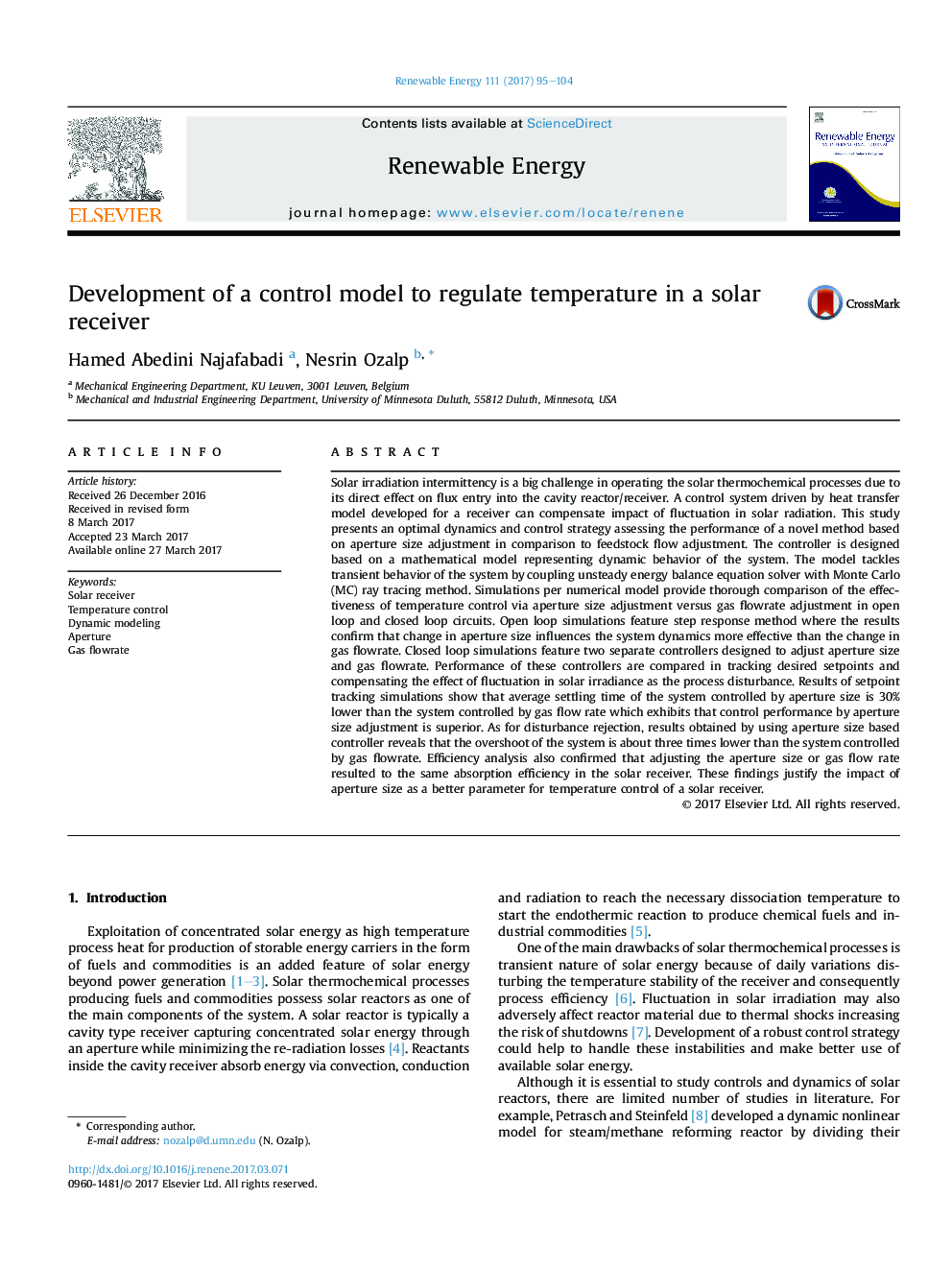| کد مقاله | کد نشریه | سال انتشار | مقاله انگلیسی | نسخه تمام متن |
|---|---|---|---|---|
| 4926288 | 1431593 | 2017 | 10 صفحه PDF | دانلود رایگان |
عنوان انگلیسی مقاله ISI
Development of a control model to regulate temperature in a solar receiver
ترجمه فارسی عنوان
توسعه یک مدل کنترل برای تنظیم دما در یک گیرنده خورشیدی
دانلود مقاله + سفارش ترجمه
دانلود مقاله ISI انگلیسی
رایگان برای ایرانیان
کلمات کلیدی
گیرنده خورشیدی، کنترل دما، مدل سازی پویا، دیافراگم جریان گاز
موضوعات مرتبط
مهندسی و علوم پایه
مهندسی انرژی
انرژی های تجدید پذیر، توسعه پایدار و محیط زیست
چکیده انگلیسی
Solar irradiation intermittency is a big challenge in operating the solar thermochemical processes due to its direct effect on flux entry into the cavity reactor/receiver. A control system driven by heat transfer model developed for a receiver can compensate impact of fluctuation in solar radiation. This study presents an optimal dynamics and control strategy assessing the performance of a novel method based on aperture size adjustment in comparison to feedstock flow adjustment. The controller is designed based on a mathematical model representing dynamic behavior of the system. The model tackles transient behavior of the system by coupling unsteady energy balance equation solver with Monte Carlo (MC) ray tracing method. Simulations per numerical model provide thorough comparison of the effectiveness of temperature control via aperture size adjustment versus gas flowrate adjustment in open loop and closed loop circuits. Open loop simulations feature step response method where the results confirm that change in aperture size influences the system dynamics more effective than the change in gas flowrate. Closed loop simulations feature two separate controllers designed to adjust aperture size and gas flowrate. Performance of these controllers are compared in tracking desired setpoints and compensating the effect of fluctuation in solar irradiance as the process disturbance. Results of setpoint tracking simulations show that average settling time of the system controlled by aperture size is 30% lower than the system controlled by gas flow rate which exhibits that control performance by aperture size adjustment is superior. As for disturbance rejection, results obtained by using aperture size based controller reveals that the overshoot of the system is about three times lower than the system controlled by gas flowrate. Efficiency analysis also confirmed that adjusting the aperture size or gas flow rate resulted to the same absorption efficiency in the solar receiver. These findings justify the impact of aperture size as a better parameter for temperature control of a solar receiver.
ناشر
Database: Elsevier - ScienceDirect (ساینس دایرکت)
Journal: Renewable Energy - Volume 111, October 2017, Pages 95-104
Journal: Renewable Energy - Volume 111, October 2017, Pages 95-104
نویسندگان
Hamed Abedini Najafabadi, Nesrin Ozalp,
